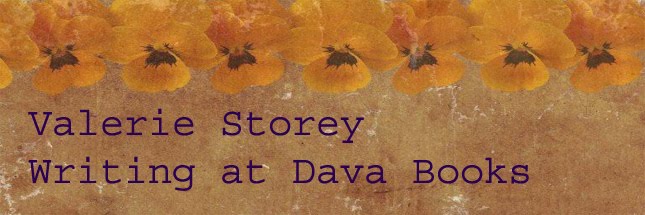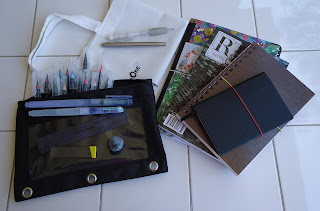The end of 2020. We made it! And I, for one, am totally worn out by the whole experience.
All the same, and despite never-ending isolation and the constant struggle to stay motivated and connected (heck, I don't even have a telephone!), I was still able to come up with my traditional "best of" list for the year.
2020's list may not include my usual favorites such as travel destinations, theater-released movies, writing conferences, or in-person workshops, but it does contain a full measure of joy and happy memories. That, and a lot of self-discovery; for instance, I learned that I love working with silver clay and that I can walk for a full two hours without needing to find an open cafe or a restroom. Who'd have thunk it?
But TMI aside, and without further ado, here's my "Best of 2020" list. I hope within it you'll find some useful ideas and inspiration to carry into 2021:
- Best TV Series: Boy, we sure watched a lot of TV this year. Many of my favorite programs were old British crime series that I found on YouTube, but the one that really stands out for me is Trial and Retribution. Great acting, great story lines, and each season is only 2 parts so there's always something new to look forward to. I'm currently watching Season 8, and will definitely be sad when I reach the end.
- Best Book (Fiction): Set in Shanghai and London, When We Were Orphans by Kazuo Ishiguru was not only the best book I read in 2020, but maybe ever (though I do tend to say that about most every book I read . . . oh, well, what can I say. There are a LOT of good books in the world). What struck me in particular about this one, though, was the ending--completely threw me. And that's all I'll say--no spoilers from me! But I really like this book.
- Best Book (Nonfiction): Life Meditations by Edward J. Lavin, SJ. Right around the middle of the year I realized I needed a serious spiritual boost. Things that had worried and bothered me at the start of the pandemic were beginning to weigh me down in ways that were unbearable: I couldn't sleep, I felt angry and confused, I avoided my WIP manuscript, and the only things I wanted to draw or paint were dark, abandoned cities or bleak, barren landscapes, usually in black. Even my happy little bird paintings began to resemble nightmare figures. Then quite by chance I came across a copy of Life Meditations on a free, giveaway pile of used books. What a gift, and what a turnaround. Needless to say, I'm feeling a lot, lot better these days.
- Best Art Supply Purchase: Art Graf sticks, simple and effective drawing tools exactly like huge pencil leads without the wood casing. I bought my first sticks to add drama to my depressing city-scapes but then quickly learned they were great for cheery sketching too. Made in Portugal, the sticks can be used on their ends or sides, leaving wide swathes of graphite you then wet with a brush for instant shadows, clouds, and value contrasts. Amazing!
- Best Online Activity: Signing up for Domestika, an online art community based in Spain and offering so many types of art and creativity classes it makes my head spin. Check out my recent post on the topic here.
- Best Restaurant: The state of New Mexico seriously cracked down on indoor--and outdoor--dining this year, but many of us who could did our best to save our restaurants: curbside, patio, 25% indoor during the rare times it was possible--I was there! Albuquerque has some excellent places to eat, but to my mind one of the best is our local French bistro: Le Troquet, a tiny treasure straight out of a Parisian novel. The food is delicious and the staff is sincere in their wish to serve. Yum!
- Best New Project: As mentioned above, working with silver clay has given me an entirely new, and exciting, range of items to add to my jewelry-making efforts. The only downside is the price; silver is expensive, but as my hope is to start selling my jewelry, maybe next year, the cost of materials will be well worth the initial price.
- Best Walking Route: It might not be Barcelona, but I certainly have found some wonderful places to walk in Albuquerque over these last long and lonely months. So far my absolute best is to walk along the ponds at Tingley Beach and from there carry on to the (closed) Albuquerque Aquarium where I can at least sit on the very attractive patio to catch my breath before heading home.
- Best Discovery: Tiny libraries! I never even knew this was a thing, but I've found these delightful little structures scattered all over my neighborhood offering books for the taking and shelves to fill with whatever I have to give back. It's now become part of my walking routine to leave a book as I set out and take a new one at the end.
- Best Accomplishment: I got quiet. Real quiet, and in the process I learned to slow down and take my day step by step. I got things done, I made progress, and was grateful for every finished page.
So there we are. I hope 2020 hasn't been too sad, scary, or uneventful for you, and if it has, take heart, we're almost at the finishing line. The madness will end. Until then, wishing you a stronger, happier, and wonderfully creative 2021!
Tip of the Day: No matter what happens, we can always dance:










